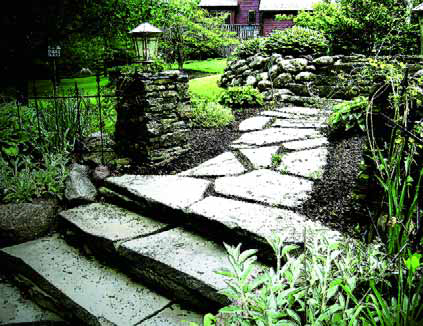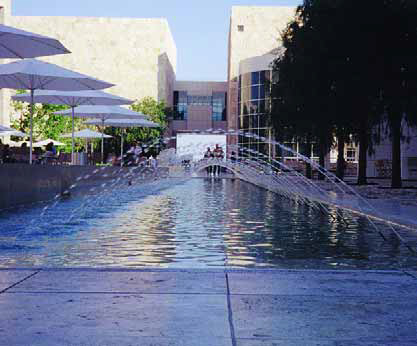column
I recently began work on a design for clients who live in a historic home just south of Rochester, N.Y. They've asked me to incorporate a pool, entertainment areas, a fireplace and a combined pool house/garage into the available space and make certain it all complements the architecture of the home and its only current outbuilding - a 150-year-old storage shed. Sitting at my drafting table, I was thinking how easy this one would be, conceptually at least. All I needed was there, from the home's architecture and an existing (and much beloved) 100-year-old pergola to the old shed, so the main challenge would come in drawing the details rather than in deciding what to do. Usually, of course, it's the other way around and
Growing as a designer is often a matter of seeing things from fresh perspectives. As one with roots in the pool industry, for example, I once thought first about water and about plants and softscape later (if at all). That bias isn't uncommon, of course: I know plenty of landscape architects and designers who think about plants first and only later consider water. It all has to do with our
It's not an uncommon goal: Nearly all of the homeowners I speak with about lighting designs want to be able to move safely and comfortably around their properties at night. Perhaps more important, they want guests and others unfamiliar with those spaces to be able to do the same without anyone being concerned about suffering an injury as a result of a misstep brought on by darkness or glare. The interesting this is, some of my clients need convincing when it comes to path or step lighting: Even if they see
Reading WaterShapes' 100th issue brought back memories of when I first discovered the magazine and my early conversations with its editor, Eric Herman. I remember thinking at that time - or at least hoping - that there really were lots of other people out there in the design/build world who truly aim to do things right, first time, every time. In looking over the poster included with the issue, I spotted the one from January 2000 with a photograph I'd taken of one of our projects - a retaining wall under construction. I don't know quite why, but that image made me think of a site I visited last year where a retaining wall built by inexperienced hands was in the process of collapsing. And not only was the wall falling apart, but it was also compromising the fence atop it as well as a concrete patio, a storage shed and an inground pool it was intended to bolster. I couldn't help thinking that, as far as our industry has come in the past decade, there are always going to be those who
Several years back, I was in a seminar at the International Pool & Spa Expo when the instructor asked everyone who had an e-mail address to raise a hand. Way back then - it was in the late 1980s or perhaps even the early '90s - using the Internet for communication was a brand-new concept to most people and there were only a few people in the room who lifted an arm. I wasn't one of them, and at that point I had no idea that e-mail and Web sites would ever become such an integral part of my life. At that time, in fact, I didn't think I'd ever need an e-mail address. After all, I
Stairs, to borrow an immortal phrase from Rodney Dangerfield, “get no respect.” In fact, if my observations through the years tell me anything, the stairs set in far too many landscapes are strictly utilitarian objects – no more than a means of getting from one level of a space to another. The only thought that seems to go into some of them has to do with avoiding trip hazards, which is important but hardly the most aesthetically oriented of approaches to take. In my experience, when stairs are considered in deliberate and creative ways, they can become
It seems to be a trend: In more and more of the conversations I’ve been having with watershapers, the level of interest in what’s involved in working overseas has really spiked in recent weeks and months. I recall a time several years back when curiosity about overseas work focused on the glamour and excitement of stepping into uncharted territory. Now, however, there’s a certain urgency to the inquiries, and my guess is there are at least three reasons behind it. First, there’s the enduring sense of the prestige and energy that
What’s the use of knowing about history? For many of us, the answer to that question seems so obvious that it comes as a shock to find out just how many people in the watershaping and landscape fields don’t grasp the all-encompassing significance of our collective past – but it shouldn’t. Using my own career as an example – and even though I now spend a considerable amount of my time teaching professionals and university students all about art and architectural history – I confess that I waltzed through more than a few early years as an aspiring landscape architect and watershaper in blissful ignorance of
Where I work in the northeastern United States, several species of trees and shrubs have been staples of residential landscape design for so long that stands of these arboreal mainstays (very often deployed by firms not known for their creativity) have become something of a visual cliché. Through the years, however, I’ve found that even these shopworn landscape icons can be used in beautiful and often surprising ways that seem perfectly suited to their environments while also making






















